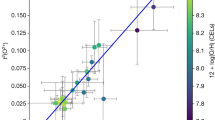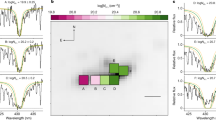Abstract
WHILE the general behaviour of the absorption lines in stellar spectra has been well accounted for by thermodynamic theory, the Balmer series shows marked peculiarities. In spite of the very high resonance potential, these lines appear even in stars of class G, and their intensity is conspicuously affected by absolute magnitude—that is, by the density of the stellar atmosphere.
This is a preview of subscription content, access via your institution
Access options
Subscribe to this journal
Receive 51 print issues and online access
$199.00 per year
only $3.90 per issue
Buy this article
- Purchase on Springer Link
- Instant access to full article PDF
Prices may be subject to local taxes which are calculated during checkout
Similar content being viewed by others
References
Fowler and Milne, M.N., R.A.S., 83, 403, 1923.
F. M. Kannenstine, Ap. J., 55, 345, 1922.
Author information
Authors and Affiliations
Rights and permissions
About this article
Cite this article
COMPTON, K., RUSSELL, H. A Possible Explanation of the Behaviour of the Hydrogen Lines in Giant Stars. Nature 114, 86–87 (1924). https://doi.org/10.1038/114086a0
Issue Date:
DOI: https://doi.org/10.1038/114086a0
Comments
By submitting a comment you agree to abide by our Terms and Community Guidelines. If you find something abusive or that does not comply with our terms or guidelines please flag it as inappropriate.



